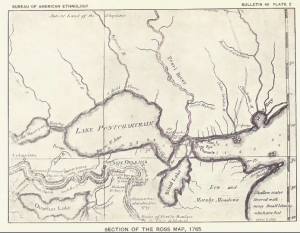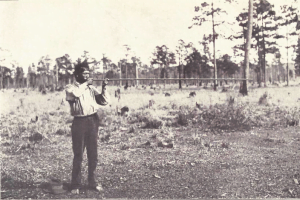Skate’ne
Late one afternoon several children were playing near their house when suddenly they saw a woman approaching. She was very old and stooping, and her hair was white. The children were greatly frightened and ran into the house, but soon returned to the old woman, who said to them: “Children, do not be afraid of me, for nothing will harm you. I am your great-great-great-grandmother, and neither you nor your mother has ever seen me. Now, go to the house and tell her that I have come.” The children did so. Then they took a deer skin and spread it … Read more


